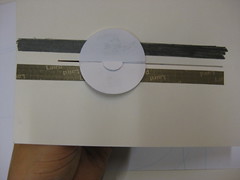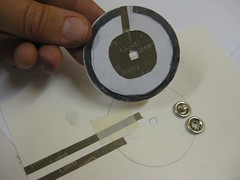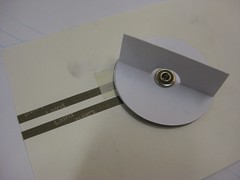Painted Pot
Pot is the abbreviation for potentiometer. Traditionally potentiometers come in knob or slider forms, such as the volume knob on your stereo or the slider for dimming lights.
A potentiometer works by having a conductive wiper slide along a resistive track. sensor measurements are taken from two places, the conductive wiper and one end of the resistive track. Depending on how far along the resistive track the slider makes contact, the resistance value you measure across the two measurement points will be different. The further away from the measuring point on the resistive track, the high the resistance.
painting potentiometers is pretty straight forward, so long as you have a nice resistive paint to use. Most carbon paints will work well, but also more conductive paints such as copper or even silver will work if you are covering larger distances (meters) with your resistive track.
Instead of measuring directly from the conductive wiper you can also create a conductive track running parallel to your resistive track. In this case your conductive wiper acts a bridge between the two. there the resistance on the conductive track should be negligible.






Video
The following video shows two resistive tracks painted with two layers of AntiStat carbon paint. The first track demonstrated in the video is 1.5cm wide, the second is 5mm wide. The conductive track is made of a silverized conductive fabric tape. At first i use a copper penny as a conductive wiper, then a piece of leather with a small stripe of conductive tape adhered to one side. The tape works much better than the penny.
Links
Becca Rose’s paper potentiometer examples >> http://blog.beccarose.co.uk/2013/08/01/paper-potentiometer/






8 Comments so far
Leave a Reply